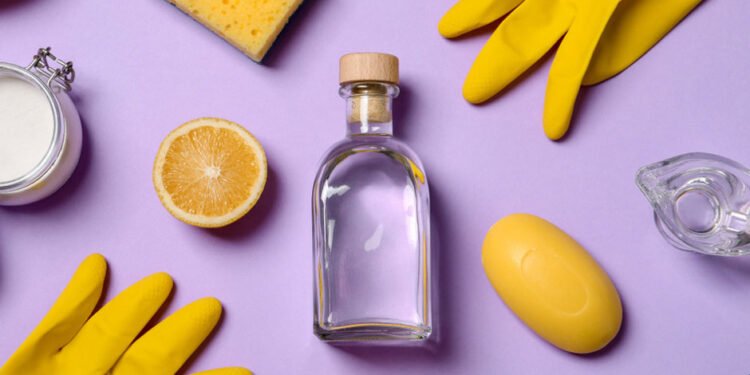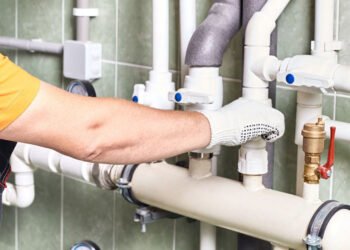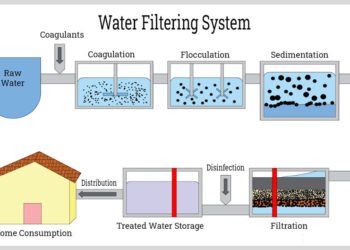While there are plenty of areas to consider when maintaining the health and wellness of your home, mold is a common problem that is underestimated – and one that can pose significant health risks and cause structural damage if left untreated. It thrives in damp, dark environments and can be particularly stubborn once it takes hold. Getting rid of tough mold requires a systematic approach and the right tools – which is why we’ve developed this comprehensive guide to help you tackle tough mold effectively.
Understanding Mold
Before diving into the removal process, it’s essential to understand what mold is and why it’s problematic. Mold is a type of fungus that reproduces through tiny spores. When these spores land on wet surfaces, they begin to grow and spread. Common places where it can be found include bathrooms, kitchens, basements, and any area that has been exposed to moisture. Exposure can lead to health issues such as respiratory problems, allergies, and skin irritation. You can also gain the help of professionals, like the ones at Alberta Safety & Environmental services; for more details, check out their website: ASE Services.
Safety Precautions
Removing mold, especially tough mold, can release spores into the air, which can be harmful when inhaled. Therefore, it’s crucial to take safety precautions:
- Protective Gear: Wear gloves, a mask (preferably an N95 respirator), and safety goggles to protect yourself from spores.
- Ventilation: Ensure the area is well-ventilated by opening windows and using fans to help disperse spores and reduce moisture levels.
- Isolation: If possible, isolate the affected area to prevent the spread of spores to other parts of your home.
Identifying the Source of Moisture
Mold cannot thrive without moisture. Identifying and eliminating the source of moisture is crucial to prevent it from returning. Common sources of moisture include leaks, high humidity, and condensation. Check for leaking pipes, roof leaks, and areas where water may be pooling. Use a dehumidifier in areas prone to high humidity to keep moisture levels in check.
Cleaning Solutions
Several cleaning solutions can be effective against tough mold:
- White Vinegar: Vinegar is mildly acidic and can kill up to 82% of mold species. Spray undiluted white vinegar onto the area, let it sit for an hour, and then scrub the area with a brush.
- Hydrogen Peroxide: A 3% hydrogen peroxide solution can be sprayed onto the moldy area. Let it sit for 10 minutes, then scrub and wipe clean.
- Baking Soda: Baking soda is a mild, natural disinfectant that can be used to clean mold. Mix one-quarter of a tablespoon of baking soda with water in a spray bottle. Spray the solution onto the area, scrub, and then rinse with water.
- Bleach: Bleach can kill almost all types of indoor mold, but it’s harsh and can produce harmful fumes. Use a bleach solution (one cup of bleach in one gallon of water) only in well-ventilated areas, and avoid using it on porous materials like wood.
Removal Process
Preparation
Move furniture and other items away from the affected area. Lay down plastic sheets to protect floors and surfaces.
Application
Apply your chosen cleaning solution generously to the area. Allow it to sit for the recommended time to ensure it kills the mold.
Scrubbing
Use a brush to scrub the area thoroughly. For tough mold, you may need to apply the cleaning solution and scrub multiple times.
Rinse and Dry
After scrubbing, rinse the area with water to remove any residue from the cleaning solution. Dry the area completely using fans or a dehumidifier to prevent mold from returning.
Dispose of Materials
If mold has penetrated porous materials like drywall or carpet, these materials may need to be removed and replaced. Seal contaminated items in plastic bags before disposing of them to prevent the spread of spores.
Preventing Mold
Once you’ve successfully removed the mold, take steps to prevent it from returning. This includes controlling your humidity, which means you should keep indoor levels down below 60% using dehumidifiers and air considitioners. You may also want to fix any leaks in your home to prevent moisture or humidity build up.
You will also want to ensure proper ventilation by using exhaust fans in bathrooms and kitchens to reduce moisture and increase air flow. Lastly, regular cleaning is a must; just keep up with dying or clearing damp or wet materials and surfaces as soon as they occur.
Ensure Constant Mold Cleaning
Mold can occur quickly – which is why so many homeowners don’t notice until it’s too late. However. by following these steps, you can effectively get rid of tough mold and create a healthier environment in your home. Regular maintenance and vigilance are key to keeping mold at bay and ensuring a safe living space.












